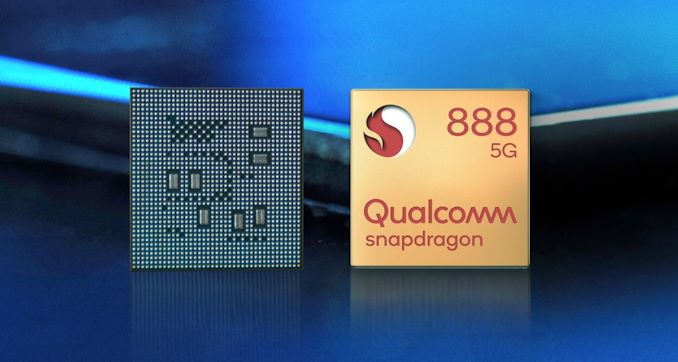
Smartphones and computers are very integrated into our daily lives, and are therefore often replaced and updated in short periods. That is why when we buy these devices, we meticulously check not only the brand, the model, and the prices, but also their specifications including the performance features. The most important performance feature that consumers look for is “speed.”
RAM is one of the key features that determines a device’s speed. RAM is short for “Random Access Memory,” which enables quick memory processing with its ability to read information in a random order instead of reading it in consecutive order. Among the many different kinds of RAM, DRAM (Dynamic Random Access Memory) is the most-commonly used kind today. It has a simple structure and a lot of storage capacity, and it is also fast. This is why it is commonly used in computers and Mobile Devices to operate the central processing unit.
The Evolution of DRAM, DDR and LPDDR
Before we understand how memory works, let us learn about a CPU’s clock rate, which is used to measure a computing device’s performance level. The clock rate measures the frequency of digital signals made of 0s and 1s. For example, 1GHz (gigahertz) would mean that there are a billion pulses per second. All PC components, including the CPU, read and write data along this pulse.
When seeing news on new memory DRAM technology or checking a PC’s specifications, you must have seen something called “DDR DRAM.” DDR is short for “Double Data Rate,” and it is the high-speed memory technology newly selected by an international organization named the JEDEC (Joint Electron Device Engineering Council) in the late 1990s.
The first DRAM models sent or received one piece of data per pulse in line with the computer’s rhythm. But as the CPU speed increased dramatically, we needed memory that was just as fast to keep up. That, along with the increase of mobile phone use, led to energy saving becoming very important. That is how DDR DRAM, which can exchange data twice per pulse with much less energy, came about.
With the development of DDR DRAM, DDR2, DDR3, DDR4, and more products with increased data exchange speed were released. All products of DDR DRAM process 2 pieces of data per pulse. However, the speed is increased by increasing the pulse frequency and not the amount of data exchanged per pulse. DDR’s maximum data transfer speed is 400Mbps, DDR2 at 800Mbps, and DDR3 at 1,600Mbps. The speed doubles at the most with each generation, while the operating voltages are 2.5V, 1.8V, 1.5V, respectively, in a decreasing trend.
Moreover, in mobile devices like smartphones and tablet PCs, energy-saving DRAM, LPDDR (Low Power Double Data Rate), is used. Like DDR, mobile DRAM can be specified into MDDR, LPDDR2, LPDDR3, LPDDR4, LPDDR5, and more. And with each generation, the data processing speed and energy-saving capacity increases.
The differences between DDR (Double Data Rate) and LPDDR (Low Power Double Data Rate) memory types are significant, particularly in terms of design, power consumption, performance, and application. Here's a detailed comparison:
1. Power Consumption
- DDR: Standard DDR memory is designed for performance and typically operates at higher voltage levels (e.g., 1.5V for DDR3, 1.2V for DDR4). This results in higher power consumption, making it less suitable for battery-powered devices.
- LPDDR: LPDDR is specifically optimized for low power consumption, operating at lower voltage levels (e.g., 1.2V for LPDDR4, 1.1V for LPDDR5). This design allows LPDDR to significantly reduce power usage, which is crucial for mobile devices.
2. Performance and Speed
- DDR: DDR memory generally offers higher performance in terms of data transfer rates and bandwidth. For example, DDR4 can achieve speeds up to 3200 MT/s (megatransfers per second) and beyond.
- LPDDR: While LPDDR also provides high data rates, it is typically lower than that of standard DDR. For instance, LPDDR4 can reach speeds up to 4266 MT/s, and LPDDR5 can go up to 6400 MT/s. However, the focus is more on balancing performance with power efficiency.
3. Architecture and Design
- DDR: DDR memory is designed for desktop and server applications, where performance is prioritized. It often includes features like higher pin counts and support for dual-channel configurations.
- LPDDR: LPDDR is designed for mobile and portable devices, emphasizing compactness and efficiency. It often has a smaller footprint and is integrated into system-on-chip (SoC) designs, which is common in smartphones and tablets.
4. Thermal Management
- DDR: Due to higher power consumption, DDR memory can generate more heat, requiring better thermal management solutions in desktops and servers.
- LPDDR: LPDDR's lower power consumption results in less heat generation, making it easier to manage thermal output in compact mobile devices.
5. Use Cases and Applications
- DDR: Commonly used in desktops, laptops, and servers where high performance is essential for tasks like gaming, video editing, and data processing.
- LPDDR: Primarily used in mobile devices such as smartphones, tablets, and laptops where battery life is critical. It is also used in IoT devices and automotive applications.
6. Refresh Rates
- DDR: Standard DDR memory typically has a higher refresh rate, which can lead to increased power consumption.
- LPDDR: LPDDR incorporates various power-saving modes, including self-refresh and deep sleep modes, which help minimize power usage during idle periods.
7. Cost
- DDR: Generally, DDR memory can be less expensive than LPDDR due to its widespread use in various applications and economies of scale.
- LPDDR: LPDDR tends to be more expensive due to its specialized design and lower production volumes compared to standard DDR.
8. Generational Differences
- Both DDR and LPDDR have multiple generations (e.g., DDR3, DDR4, DDR5 for DDR; LPDDR2, LPDDR3, LPDDR4, LPDDR5 for LPDDR), with each generation offering improvements in speed, efficiency, and features. However, LPDDR generations are specifically designed to enhance power efficiency while maintaining adequate performance for mobile applications.
Other

What is HBM (High Bandwidth Memory)?
2024.09.05

What is Antenna Tuner IC?
2024.09.20

Snapdragon 888 5G Mobile Platform
2024.09.26

What is WiFi 6E?
2024.09.26

What is Bluetooth Audio SoC?
2024.09.26

What's HBM3E (High Bandwidth Memory 3)?
2024.09.26

What is an Audio Codec?
2024.10.09

What is a Power Management Integrated Circuit (PMIC)?
2024.10.09





